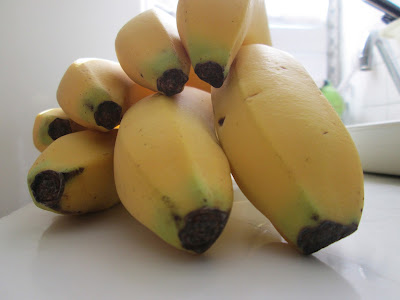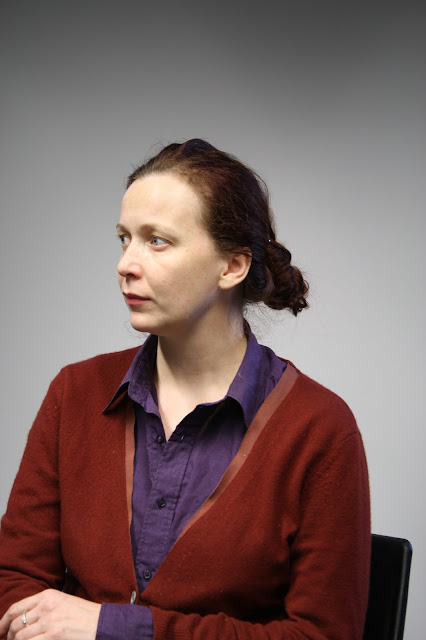Advertisements
 |
Untitled. Copyright Gerardo Ramírez Pfizer |
Gerardo Ramirez Pfizer shot his hand of bananas the same way Alicia Melendez portrayed her shoes: nose to nose. This extreme close-up is seen a lot in the book and no doubt reflects the need for visually impaired people to hold things close to examine them. This results in unusual and striking perspectives, like this one of imminent and aggressive bananas. They are they glimpsed with black eyes that are examining us? Are they approaching us? They are experienced bananas, fruits with which we relate. is not sitting
 |
| Untitled. Copyright Aaron Ramos. Another beautiful example of the thorough examination. Did the sound lead Ramos to the subject? Imagine the patience and slow movement required to this shot. |
there waiting to be consumed. It is an individual thing in a world where objects do not automatically have value or precedence over one another; most are experienced individually. Right now, it's bananas. We are going to close. Maybe they will open up to us.
 |
| Untitled. Copyright Mickel Smithen. |
Once again, the possibilities of blindness – now on the part of the photographer and the subject – reorient our view of the image. Is it or is it not a formal portrait, for example.
The subject “did you dress for the occasion?” Are brightly colored clothes special or what a myopic woman chooses every day? Is her expression the expression she puts on when she is between tasks or waiting, since she may not be familiar with the wide variety of facial cues the psychic uses for small distinctions of mood or occasion? For the photographer, this might be a woman in a chair rather than a formal portrait. Did it matter to her that she was being photographed? Was she interested in the resulting image—or vain about the result?
On the other hand, McWilliam points out that blind photographers never point and shoot; that all of his work is accomplished over a longer period of time than most visionary photographers. Setting up the equipment, not to mention taking it, is especially time-consuming without the aid of vision.
So we can be sure that Smithen at least had the chair waiting for an occupant. For her? For a number of people? Who did you sit for? This footage was on purpose, but the extent to which the footage depended on this subject is uncertain, particularly as the image is untitled.
 |
Untitled. Copyright Tanvir Bush. |
The variety of photographs in The blind photographer It's surprising and wonderful, too many to touch on in one review. But it would be a shame not to share this series of photos of this young man lifting this weight. There are several such series, in which a sighted subject playfully performs some act of athletic skill for the photographer. They “show off” and how they do it, and they keep their eyes directly on the camera in a way that I suspect they wouldn’t if they were sure the photographer could see them. In this photo, the young man appears to be measuring the photographer's abilities as much as he is demonstrating his own strength. He seems to have no doubts about the latter: it's a means of peeking at the blind man with the camera. Who is looking at him? The person or the machine? Is one more imbued with vision than the other? Or does each confer vision on the other?
The photographer's blindness is disinhibiting for the subject seen here and in other photographs. They express their curiosity, their arrogance, their uninhibited joy in their accomplishments and activities in ways I haven't experienced in other photographs. Go to the library and ask for this book: Take a look. This is so much fun!
Not being familiar with Candia McWilliam, I looked her up. Your writing in The blind photographer is exceptionally good and insightful. I shouldn't have been surprised to find out she's blind. Apparently your eyes work, but ten years agocontracted blepharospasm, a disease that makes it impossible to open the eyelids. She writes by holding an eyelid open with one hand and typing with the other. Your memory, What to look for in winter: A Memoir in Blindness (2010), It's on my list.


